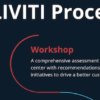In a previous post, I wrote about the importance of performing a current state analysis before embarking on any IT project. Especially a project that involves transitioning legacy IT systems to new cloud-based IT solutions. The legacy IT tower is often a complex mess of interconnected systems, with multiple stakeholders, many business processes, and years’ worth of pain points and bottlenecks. The current state analysis captures all of this information and becomes the starting point to any conversation about moving to a new, cloud-based solution.
As critical as the current state analysis is in making your case, it’s just as important to have a second document completed: the future state analysis.
As its name suggests, the current state analysis is an accurate snapshot of your company’s systems as they exist today. The future state analysis is where you lay out your vision for the future. At this stage, a complete understanding of business processes and stakeholders is critical, because your goal will be to flesh out the ideal experience for users, and clients, or customers. In order to accomplish this, you’ll need stakeholders from every department in the company to provide a step-by-step guide of their workflow. If there is a new service to be incorporated, that must be accounted for as well. Once complete, the future state analysis is your “blueprint” for how everything should work in a perfect world.
The gap between the current state analysis (how things work now) and the future state analysis (how you want things to work) represents the opportunity for improvement.
This is where ACLIVITI is the trusted advisor you want to have on your side. Our team has a deep understanding of business processes and extensive experience in XaaS (including, but not limited to, UCaaS and CCaaS solutions), cloud-based IT solutions.
Learn More About CCaaS
ACLIVITI will work with you to ensure an accurate current state analysis is performed as well as help produce a compelling future state analysis. These documents are critical to the leadership of your company — whether that’s the CEO, CIO, a VP, or the board — buying into the project. If you can’t identify the current weaknesses in your IT operations and make a compelling case for the way things should be, you aren’t going to be able to sell the project, even if it does hold the promise of reducing your network tower spend.
ACLIVITI offers another key advantage as a trusted advisor. We know providers and their cloud-based IT solutions inside and out. We work with all of them, and we have negotiated over $1 billion in contracts in our category. Once your future state analysis is completed, we can work with you to build the business case for the project, including unbiased recommendations for specific solutions. ACLIVITI’s APEX Technology Value Rationalization (TVR) framework uses proven, fact-based, data-driven scoring to identify the ideal XaaS solutions to meet your goals.
Partner with ACLIVITI as your trusted advisor in the process, and you’ll get results that accomplish the goals laid out in your future state analysis. Your company will take full advantage of the benefits of XaaS, including massive savings opportunities in network tower spending, improved customer service, reduced maintenance and downtime, and high-performance security. Your company gets what it was aiming for, and you get the credit for a project that succeeded.












